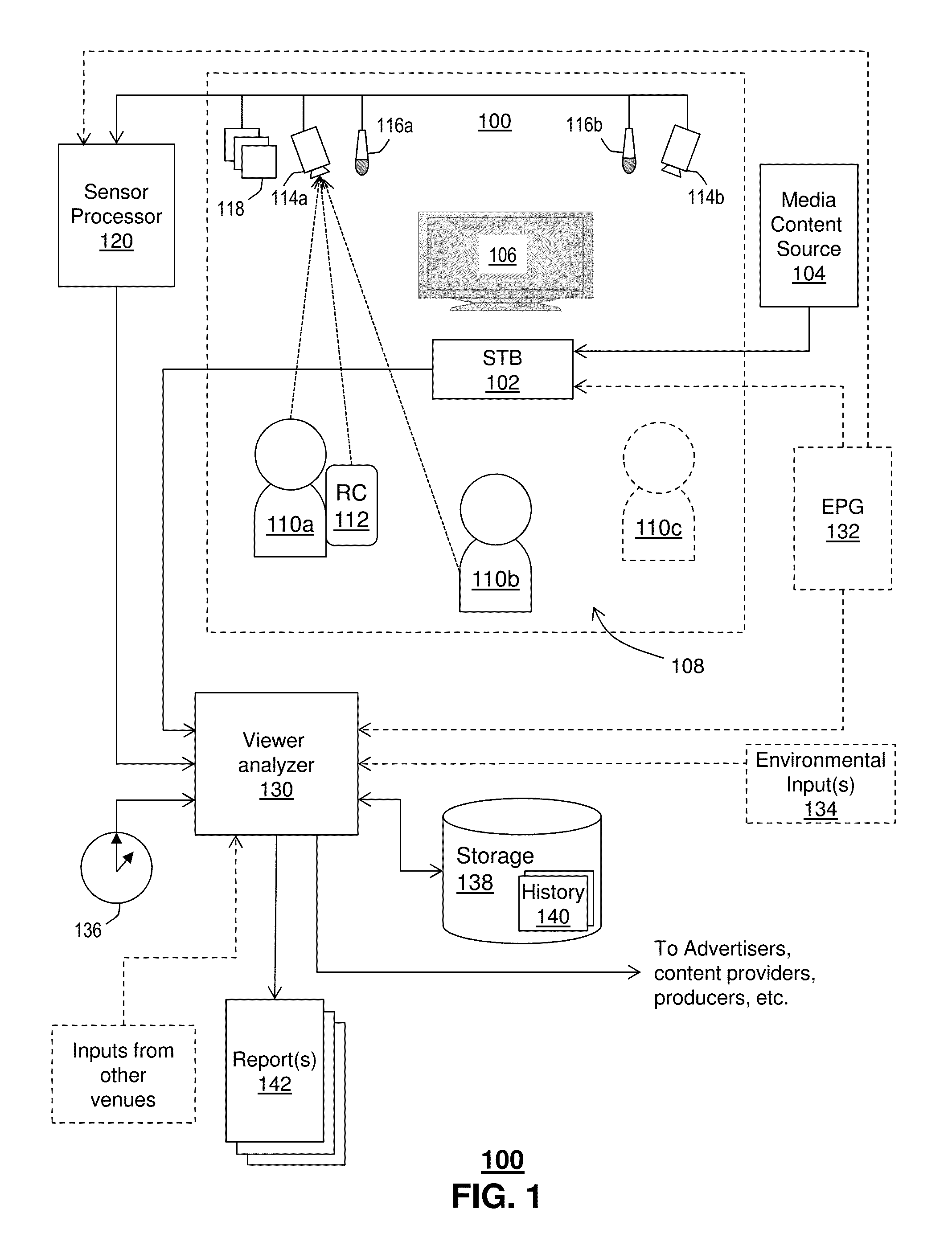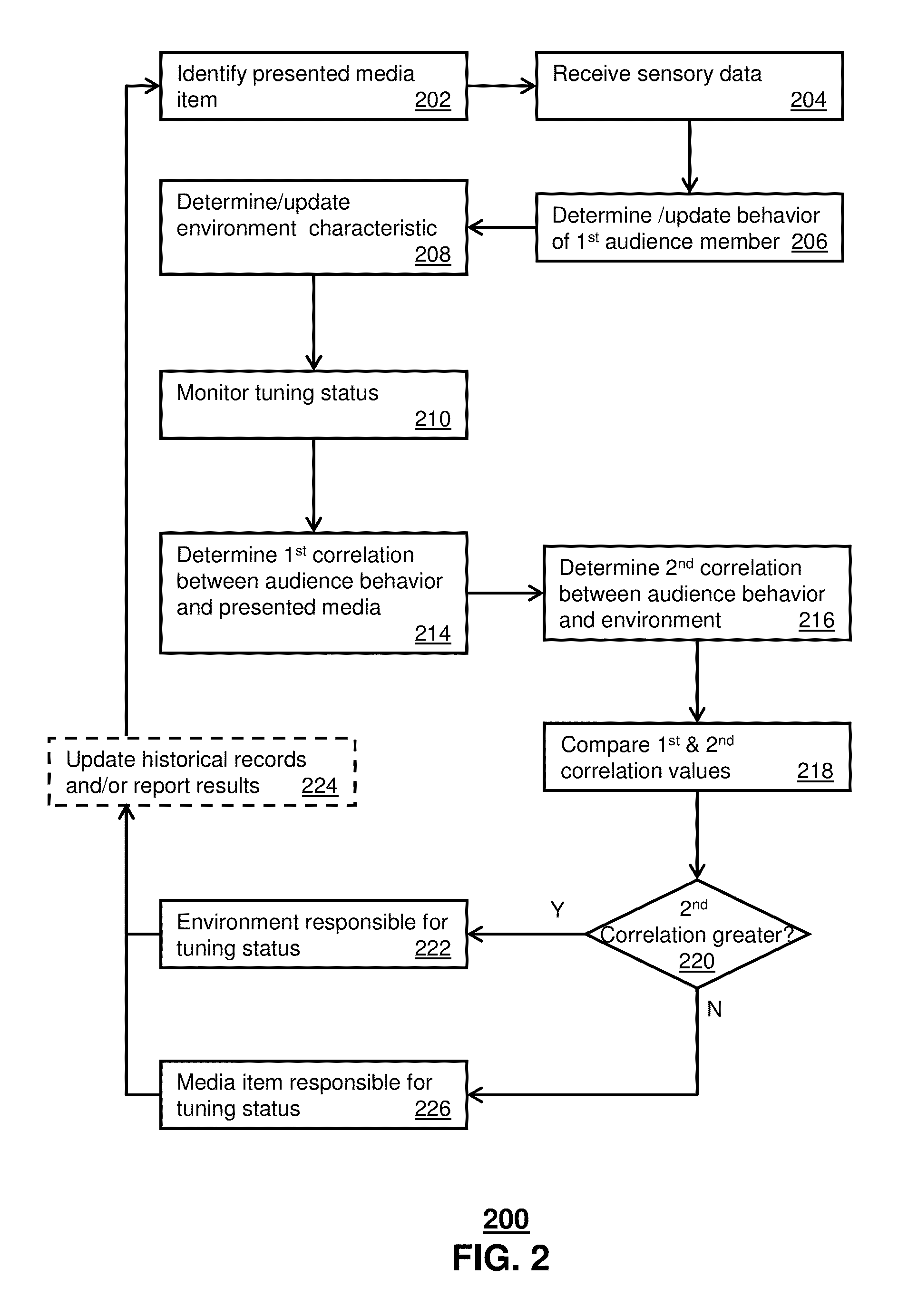Method and system for analysis of sensory information to estimate audience reaction
- Summary
- Abstract
- Description
- Claims
- Application Information
AI Technical Summary
Benefits of technology
Problems solved by technology
Method used
Image
Examples
Embodiment Construction
[0012]The subject disclosure describes, among other things, illustrative embodiments of automated analysis of sensory information related to an audience to estimate audience reaction according to tuning status, such as remaining fixed tuned to a presentation of a media item or tune away events during which the audience tunes from presentation of one media content item to presentation of another media content item. The sensory information can include information obtained during presentation of the media content item. The information can be related to one or more audience members and / or an environment within which the media content item is being presented. Other embodiments are included in the subject disclosure.
[0013]One embodiment of the subject disclosure is a method that includes identifying, by a system including a processor, a presentation of a first media item at a display. The display is communicatively coupled to a media processor that is tuned to the presentation of the firs...
PUM
 Login to View More
Login to View More Abstract
Description
Claims
Application Information
 Login to View More
Login to View More - R&D
- Intellectual Property
- Life Sciences
- Materials
- Tech Scout
- Unparalleled Data Quality
- Higher Quality Content
- 60% Fewer Hallucinations
Browse by: Latest US Patents, China's latest patents, Technical Efficacy Thesaurus, Application Domain, Technology Topic, Popular Technical Reports.
© 2025 PatSnap. All rights reserved.Legal|Privacy policy|Modern Slavery Act Transparency Statement|Sitemap|About US| Contact US: help@patsnap.com



